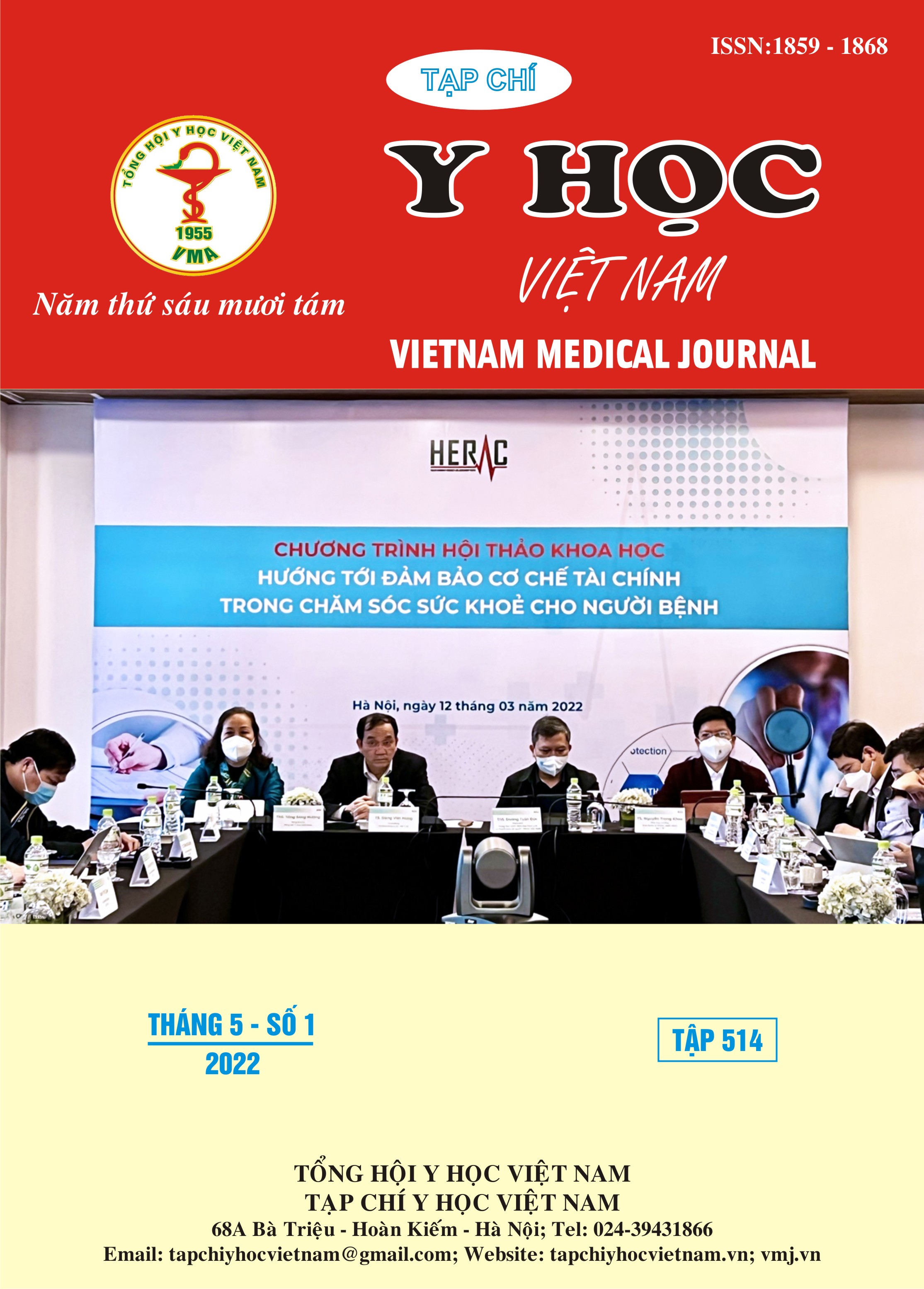TO EVALUATE THE EFFECTIVENESS OF “FALCIFORM TECHMIQUE” VIA LAPAROSCOPY IN REPAIRING OF DISTAL CATHETER OBSTRUCTION FOLLOWING VENTRICULOPERITONEAL SHUNT
Main Article Content
Abstract
Purpose: To evaluate the effectiveness of “falciform technique” via laparoscopy in repairing of distal catheter obstruction following ventriculoperitoneal shunt. Materials and methods: A retrospective study of 19 distal obstruction patients following ventriculoperitoneal shunt, underwent laparoscopic repair at 108 Military Central Hospital from December 2015 to January 2021. All of these were done using the ‘‘falciform technique,’’ with the fixation of the distal catheter to the falciform ligament in supra-hepatic space performed laparoscopically. Results: In total, 19 distal obstruction patients following ventriculoperitoneal shunt patients, the most common cause of hydrocephalus was meningoencephalitis (36.8%); followed by subarachnoid/ventricular hemorrhage (31.6%). The mean time from previous ventriculoperitoneal shunt placement to obstruction was 9.5 ± 4.9 months. The most common cause of distal catheter obstruction is due to the adhesiolysis of greater omentum (47.4%), foreign bodies (31.6%). The average surgical time was 32.1±14.7 minutes. Median follow-up was 14.3 ± 8.7 months. Except for 2 patients died during the follow-up period (1 due to pneumonia, 1 due to exhaustion), none of the patients (0%) was found to have distal obstruction at the end of the study period at the most recent follow-up. Conclusion: Laparoscopy with the application of falciform technique is a safe and highly effective method in repairing distal catheter obstruction following ventriculoperitoneal shunt.
Article Details
Keywords
Laparoscopic, hydrocephalus, falciform ligament, ventriculoperitoneal shunt (VPS)
References
2. Schucht P, Banz V, Trochsler M, Samuel I, Krähenbühl AK, Reinert M, Jürgen Beck et al (2015). Laparoscopically assisted ventriculoperitoneal shunt placement: a prospective randomized controlled trial. J Neurosurg 122:1058–1067.
3. Svoboda SM, Park H, Naff N, Dorai Z, Williams MA and Youssef Y (2015). Preventing Distal Catheter Obstruction in Laparoscopic Ventriculoperitoneal Shunt Placement in Adults: The ‘‘Falciform Technique’’. Journal of laparoendoscopic and advanced surgical technique. Volume 25, Number 8.
4. Hijrat KA, Shi X, Soufiany I et al. (2017). Laparoscopic Fixation of Distal Catheter of the Ventriculoperitoneal shunt with Falciform Ligament in Supra-Hepatic Space by Modified Falciform Technique. Biomedical Letters Volume 3 | Issue 1|Pages 40-44.
5. Basauri L, Selman JM, Lizana C (1993). Peritoneal catheter insertion using laparoscopic guidance. Pediatr Neurosurg. 19:109–110.
6. Naftel RP, Argo JL, Shannon CN, et al. (2011). Laparoscopic versus open insertion of the peritoneal catheter in ventriculoperitoneal shunt placement: review of 810 consecutive cases. J Neurosurg. 115(1):151–158.
7. Ferreira FL, Costa VFJ, Moreira FR, et al. (2021). Abdominal Complications Related to Ventriculoperitoneal Shunt Placement: A Comprehensive Review of Literature. Cureus 13(2): e13230. DOI 10.7759/cureus.13230.
8. Fernanda OC, Antonio RB, Luciano G, José FS (2014). Laparoscopic assisted ventriculoperitoneal shunt revisions as an option for pediatric patients with previous intraabdominal complications. Arq Neuropsiquiatr 72(4):307-311.


